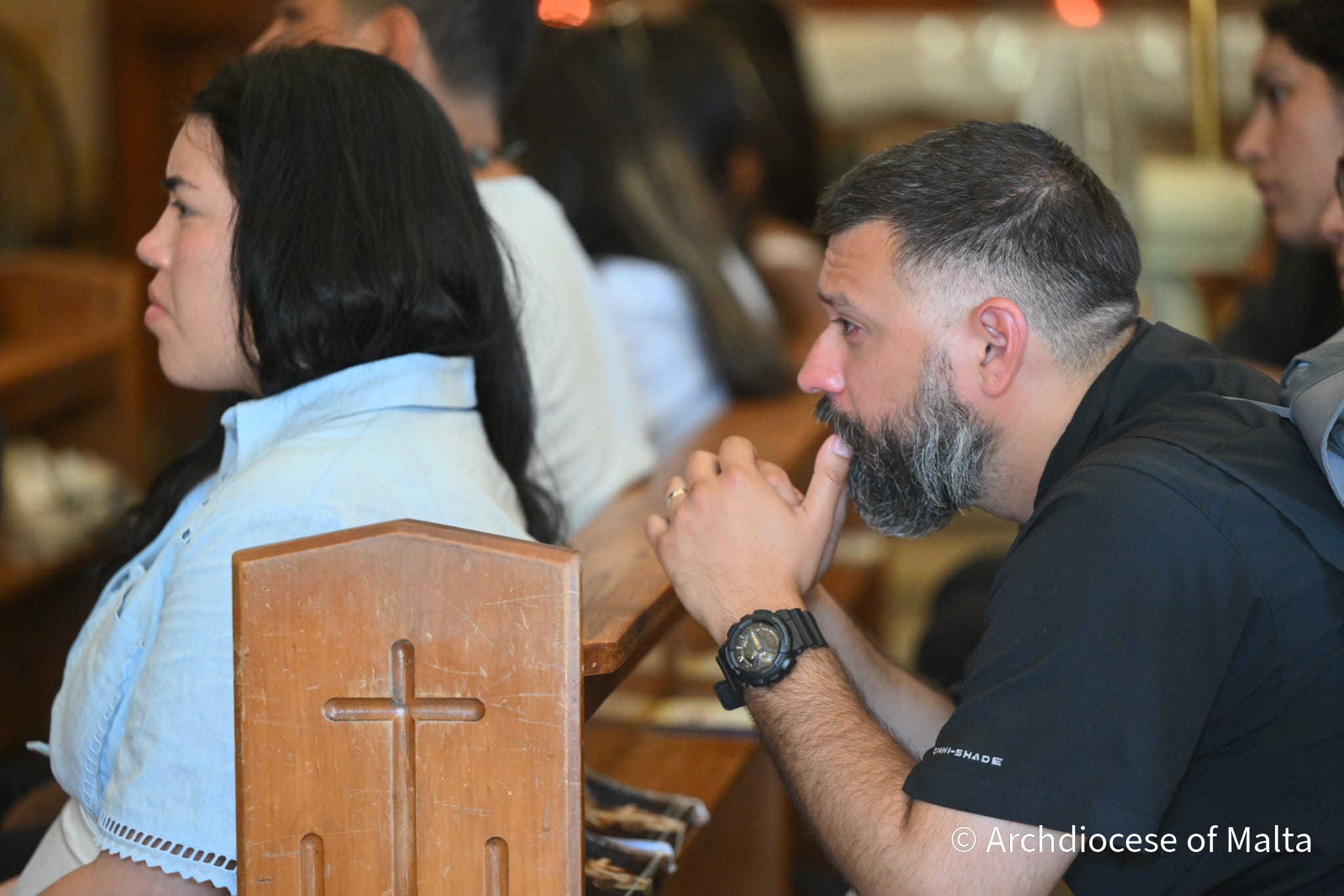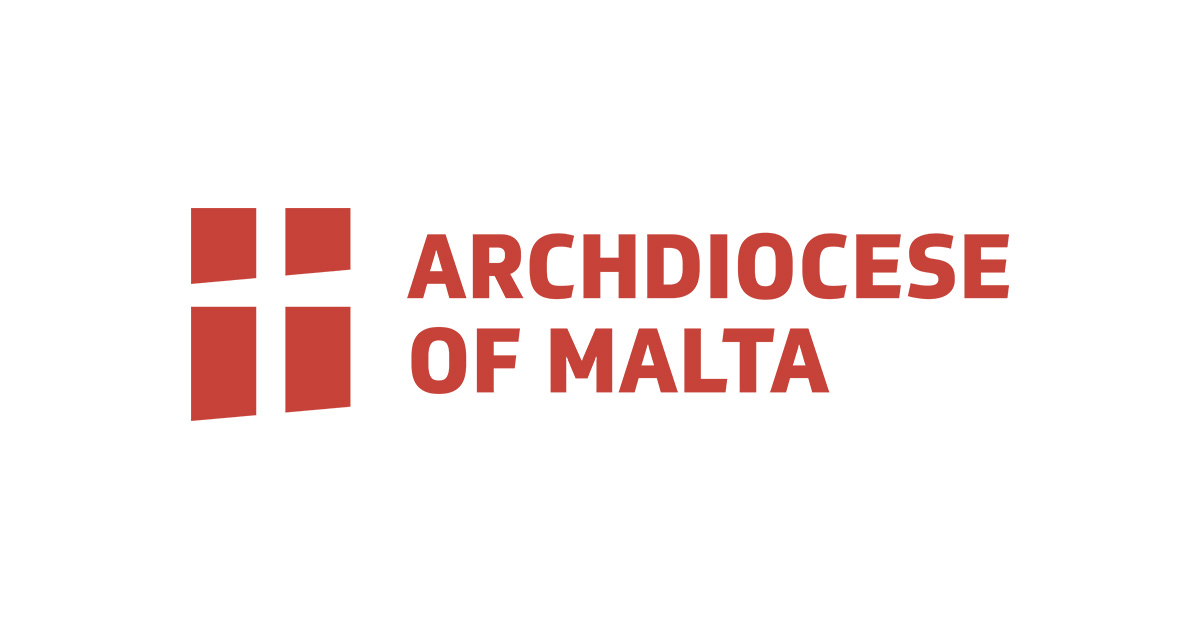
Message by Archbishop Charles Jude Scicluna
Dear young people, as Archbishop of Malta, I welcome you to this sacred shrine, our diocese and our beautiful island. In Malta we have two dioceses, the Archdiocese of Malta and the Diocese of Gozo across the sea, you can see Gozo from here, this is a high point.
This shrine is the most ancient shrine dedicated to our Lady on these islands. The place where this shrine is, is called Mellieħa. The place is called Mellieħa, which comes from ‘melħ’ which is salt, because down at the beach there, there were also ancient salt pans. As we know, salt was a very precious commodity that was used to preserve meat especially, and fish but also it was an important ingredient in the cuisine. And Jesus says: “You are the salt of the earth” (Mt 5:13); purification and preservation. So the title of this shrine is the Shrine of Our Lady of Mellieħa. It reminds us that we are the light of the world but also salt of the earth (see Mt 5:13-15).
The icon itself is very ancient. We’re talking about an icon which, according to the last tests and studies we have, is at least eight centuries old. We are talking about an icon that is 800 years old, which is painted on the live rock and used as a focal point of a Church hewn in the rock. You can see it, if after your morning prayers, you can actually visit this inner sanctuary, there is the live rock, you know this was hewn in the rock. Later on, they extended the church by building this structure as an extension of the original grotto-cave that used to house this shrine, this place of worship. Many Maltese used to participate in pilgrimages from all over the island and come here praying through the intercession of Our Lady.

But what does Our Lady mean in our life? What does she say? She doesn’t say a lot, but what Our Lady says in the gospel, especially in the Gospel of St Luke is enough for us to understand who she is and the One that the Lord has made manifest in her. She herself says in the beautiful song of the Magnificat: ‘my soul magnifies or praises the Lord’ (Lk. 1:46-55), that she is a lowly servant of the Lord, He has looked upon his lowly, his humble servant. So the first virtue of Our Lady, which is so important, is her humility. Humility is the strongest weapon against our enemy, the devil. The devil is proud, is unrepentant. Whoever grows in humility grows in wisdom. He has the courage to recognise his or her true self but also to ask for help. And this is what Our Lady does when she is approached by the angel of the Lord and she receives the request to say yes to an extraordinary mystery – the Son of God becoming man, human in her womb. This is the handmade of the Lord, let it be according to your will, let it be unto me as you say.
Humility, but also humble and joyful obedience. But the obedience of Our Lady was a bit messy. The first challenge was to explain to Joseph, her promised spouse, how come that she was pregnant. The Gospel of Matthew describes the dilemma of Joseph, the just carpenter, how can it be? She herself asked the angel Gabriel, I do not know man, how can I become pregnant? And the angel Gabriel tells her the spirit of the Lord will overshadow you, you will be overshadowed by the mercy, the grace and power of God.
The baby that will be born from you will be the son of the most High. He will save his brethren. He will be a King, son of David. And Joseph is from the house of David, decides to let her go quietly; he does not want to condemn his future spouse to be stoned to death. He wants to leave her quietly to save her and the baby. This is where God intervenes and tells Joseph in a dream: ‘Do not be afraid to accept Mary into your household, the baby that she is carrying is from the Holy Spirit” (Mt 1:20). So the Lord intervenes to save Mary’s life and also the life of the baby in her womb and the Gospel of Matthew explains that the Lord intervenes not everyday but in moments of crisis – when they have to flee to Egypt to save the mother and the baby, when they have to return from Egypt but then not to settle in Betlehem but in Nazareth.

Our Lady also has to deal with the moment when Jesus, at the age of 12, disappears and they are lost. Imagine having to be accountable for the Son of God and not knowing where the young boy is. He is 12 years old. Both parents know who this young boy is and he has also developed his own consciousness. “Don’t you know that I need to be at the house and business of my Father?” (Lk 2:49) And there is one last word, Our Lady tells us: “ Do whatever he tells you” (Jhn 2:5). These words and the last words we have a record in the Gospel of John uttered by Mary are said in the context of the marriage or wedding of Cana. She notices that the bride and the bridegroom are in deep trouble, another messy situation. They have lots of guests, but they have no wine and she tells her son: “They don’t have any wine” (Jhn 2:3). And Jesus tells his mother that it is not a problem. And I can imagine her look, as she looked at her son. This was going to be the first sign. The only thing that she says to the servants is: “Do whatever he tells you” (Jhn 2:5).
Whoever grows in humility grows in wisdom.
And now he realises that his mother is almost pushing him to manifest his glory to his disciples. He tells the servants: “Fill these six huge jars with water” (Jhn 2:6-7), and they do that. Then they start pouring, the water turned into wine, very good wine, excellent wine. The head of the table says, this is so good, you should have served this at the beginning when they were still sober, now they’re almost drunk and you’re serving the best wine. The best wine that Jesus gives us through the intercession of his mother.
Whenever you are in a messy situation, in trouble, turn to her. But to your heart, she will only say one thing, do whatever he tells you, obey my son. And this is a very important piece of advice, because it reflects what the Father says at the transfiguration. At one point, Jesus takes three of his disciples: Peter, John and James, all fishermen, on a mountain, he starts praying, he is transfigured, he becomes so full of light, so brilliant, so beautiful. His garments are of an extraordinary brilliant white. Moses and Elijah appear discussing his passion and a voice is heard; “This is my beloved son, in whom I am well pleased, listen to him, listen to him” (Mt 3:17).

So there is a connection between what the Father in heaven tells us at the transfiguration, listen to my son, and what the mother says to the servants: do whatever he tells you. And so you realise, what our Lady says is not only on the same wavelength as our Father in heaven, but it is the true path to wisdom, to peace, to joy, as if there is a thirst in our hearts, it is a thirst for love, for true friendship, for joy, for peace.
Before you do your morning prayers, I would like to ask you to pray in this shrine for the gift of peace, peace in the world, all over the world. We may at times lose hope when we are confronted with so much evil, so much arrogance, so much injustice, but let us start our long journey to doing something in life, in our hearts. And I would like to suggest that we say an important prayer through the intercession of Our Lady today. Lord, help me in my life here on earth to leave the world a better place. It depends on each and every one of us, whatever you do in life, whatever is your vocation or mission, pray that you leave the world a better place.
✠ Charles Jude Scicluna
Archbishop of Malta






